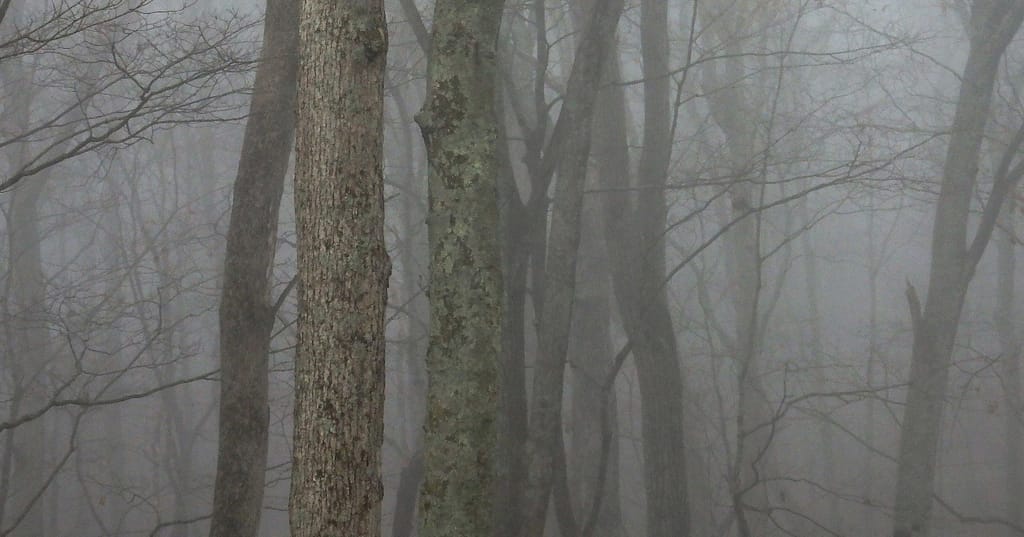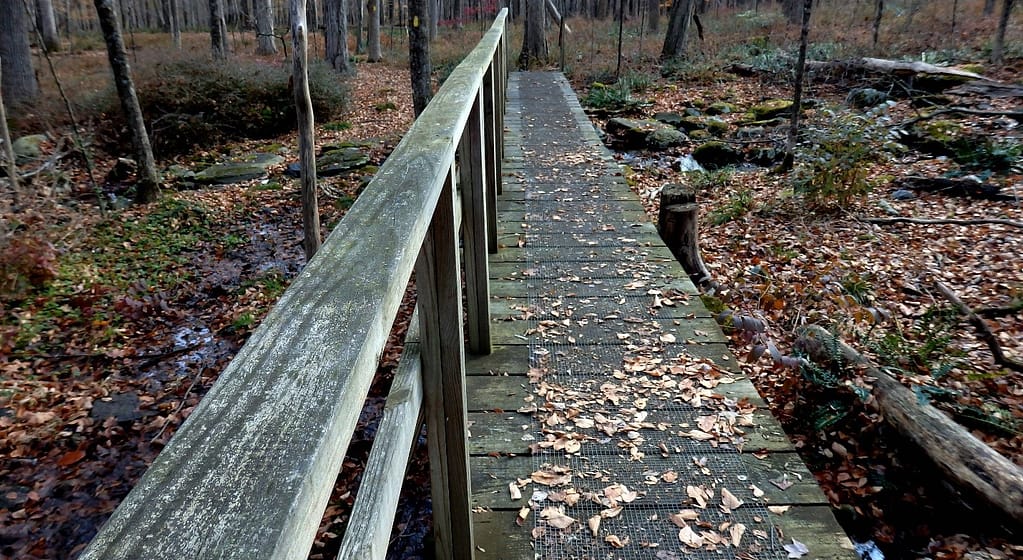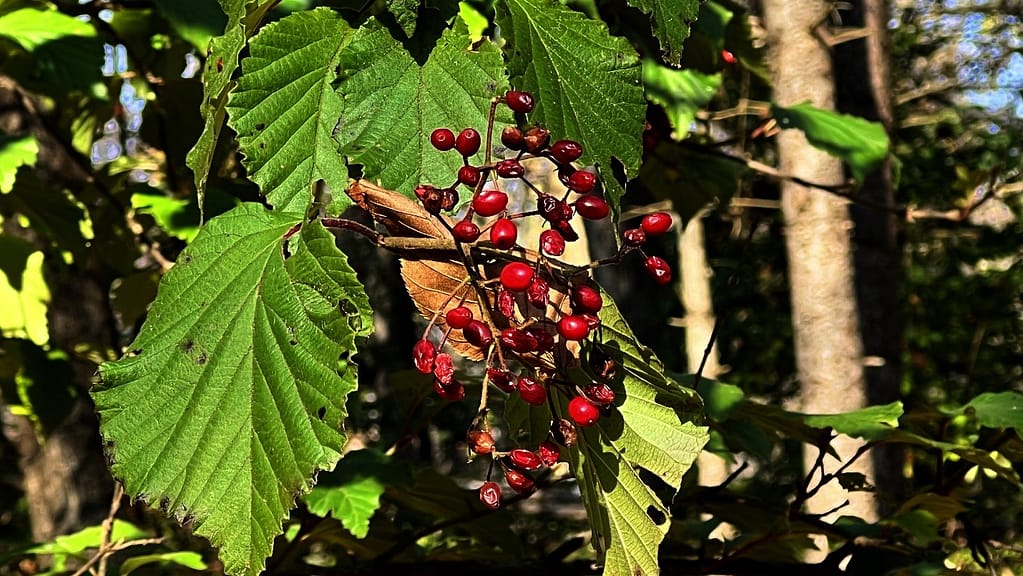by George Jacobi

Not long ago, Joshua’s Trust past President Rob Beach and I had a conversation within which he wished he could see where the natural world ended up after another human lifetime, to compare it with the changes during his own. Alas, we are afforded but a brief glimpse of environmental evolution in our four score and ten years. If we’re lucky. We live on a subway platform; the history train roars in, stops for a millisecond. The doors close, it roars away into the dark again, leaving us behind.
Or so I’m inclined to think as I pause to look around on a hike in today’s preserve. It’s early on a damp Sunday. The first frost came down hard last week. The only motion here is that of the last few slowly falling leaves. Without that adornment the trunks are visually prominent, almost overwhelming. Surrounding me is a landscape of gray: gray fog, gray trees, gray boardwalk. Never mind the future, it’s tough to see anything right now. I’m close to a main road, but it’s quiet except for a far leaf blower. When that shuts down, silence falls like the sudden absence of my imaginary train.

Each of our preserves has its own personality, a distinct biological and geological identity. We always like some better than others. I’m in a small one, ordinary in most ways. Here ash trees are at war with invaders, while many white oaks gave up the fight after the spongy moths and drought. Fallen soldiers lie about. Invasive bittersweet takes their places. I know there are wildlings though – deer, fox, barred owls. The brook harbors life in season, from tree canopy to beneath its rocks. The future of our biosphere is unrevealed; there is no way to tell which tiny constituent of an ecosystem might be important later. With luck, this could be all chestnuts again in a century.
I’m trying to be sneaky. Not only dead leaves crunching, but the low sun behind me make success unlikely. I won’t see any deer today. Good thing there are blazes too, as the noisy brown carpet hides the loop trail. It’s a gradual slope, left to right; I go right and downhill. Familiar winter birds appear, chickadees and nuthatches. Titmice. Gray birds all. Gray squirrels complain when I stop to scrawl a note. “Kuk kuk kuk”. They warn each other but never reply. It’s not a conversation, it’s an instinct.
Within the deciduous woods is a grove of hemlocks on life support; mostly needle-less. At the halfway point, I cross a boardwalk bridge; alongside lie two large flat rocks. I hypothesize they were once a wagon bridge over this swampy area. Only a guess, a shot at apprehending an era long before my own, when this was likely a sheep pasture. Norway spruce trees are visible back in the bare woods, spreading from someone’s yard. The sun burns through at last.

Up the hill is a thicket of bushes with red berries, still green. My phone says they’re Asian Viburnums. After that appears a confusing confluence of stone walls. I stop to ponder again. Maybe they used these diagonal walls to pinch the flock into a smaller area for shearing? I squint but can’t see back up the subway tunnel any better than Rob and I could see forward into the future. We’ll be getting off soon; others will board. Short ride. Better enjoy it.
As the path crosses the top of the ridge, a more cheerful surprise: the ground is covered with bitternut hickory nuts. Deer food. Not as visible a tree as shagbark; you’d be excused for missing it unless it was this time of year and you looked down. Finally, I pass a huge split rock, head downhill, cross the second longer boardwalk over the brook toward home. Historical interaction between us and our native land continues apace in this Joshua’s Trust preserve. Want to guess where I am?